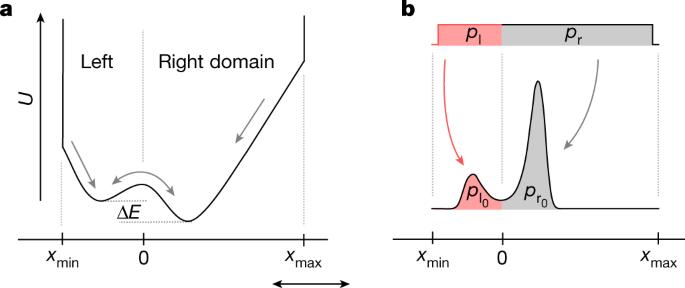胶体系统中的指数式快速冷却
IF 50.5
1区 综合性期刊
Q1 MULTIDISCIPLINARY SCIENCES
引用次数: 78
摘要
由于冷却物体的温度会随着它放松到热平衡状态而降低,因此人们直觉地认为,热物体的冷却时间应长于温物体。然而,大约 2300 年前,亚里士多德就指出:"要使热水迅速冷却,首先要把它放在太阳下 "1,2。20 世纪 60 年代,人们重新发现了这一反直觉的现象,即 "热水比冷水结冰更快",并将其称为姆彭巴效应3。尽管已经提出了许多具体机制6,7,10-16,但对于其根本原因还没有达成普遍共识。在此,我们在受控环境中演示了姆彭巴效应--将胶体系统浸入作为热浴的水中进行热淬火。我们的结果具有可重复性,并且在数量上与基于最近提出的理论框架17 的计算结果一致。通过精心选择参数,我们观察到的冷却速度比使用典型参数观察到的速度呈指数级增长,这与最近预测的强 Mpemba 效应相符18。我们的实验勾勒出了加速散热和弛豫至热平衡所需的一般条件,并支持了这样一种观点,即姆彭巴效应并不仅仅是关于水如何冻结成冰的科学奇观--水的众多反常特征之一19,而是具有广泛技术意义的各种反常弛豫现象的原型。我们利用一个胶体系统来演示姆彭巴效应,并获得导致其反常弛豫动力学的参数。本文章由计算机程序翻译,如有差异,请以英文原文为准。

Exponentially faster cooling in a colloidal system
As the temperature of a cooling object decreases as it relaxes to thermal equilibrium, it is intuitively assumed that a hot object should take longer to cool than a warm one. Yet, some 2,300 years ago, Aristotle observed that “to cool hot water quickly, begin by putting it in the sun”1,2. In the 1960s, this counterintuitive phenomenon was rediscovered as the statement that “hot water can freeze faster than cold water” and has become known as the Mpemba effect3; it has since been the subject of much experimental investigation4–8 and some controversy8,9. Although many specific mechanisms have been proposed6,7,10–16, no general consensus exists as to the underlying cause. Here we demonstrate the Mpemba effect in a controlled setting—the thermal quench of a colloidal system immersed in water, which serves as a heat bath. Our results are reproducible and agree quantitatively with calculations based on a recently proposed theoretical framework17. By carefully choosing parameters, we observe cooling that is exponentially faster than that observed using typical parameters, in accord with the recently predicted strong Mpemba effect18. Our experiments outline the generic conditions needed to accelerate heat removal and relaxation to thermal equilibrium and support the idea that the Mpemba effect is not simply a scientific curiosity concerning how water freezes into ice—one of the many anomalous features of water19—but rather the prototype for a wide range of anomalous relaxation phenomena of broad technological importance. A colloidal system is used to demonstrate the Mpemba effect and obtain the parameters responsible for its anomalous relaxation dynamics, which are manipulated to achieve exponentially faster cooling than typical.
求助全文
通过发布文献求助,成功后即可免费获取论文全文。
去求助
来源期刊

Nature
综合性期刊-综合性期刊
CiteScore
90.00
自引率
1.20%
发文量
3652
审稿时长
3 months
期刊介绍:
Nature is a prestigious international journal that publishes peer-reviewed research in various scientific and technological fields. The selection of articles is based on criteria such as originality, importance, interdisciplinary relevance, timeliness, accessibility, elegance, and surprising conclusions. In addition to showcasing significant scientific advances, Nature delivers rapid, authoritative, insightful news, and interpretation of current and upcoming trends impacting science, scientists, and the broader public. The journal serves a dual purpose: firstly, to promptly share noteworthy scientific advances and foster discussions among scientists, and secondly, to ensure the swift dissemination of scientific results globally, emphasizing their significance for knowledge, culture, and daily life.
 求助内容:
求助内容: 应助结果提醒方式:
应助结果提醒方式:


